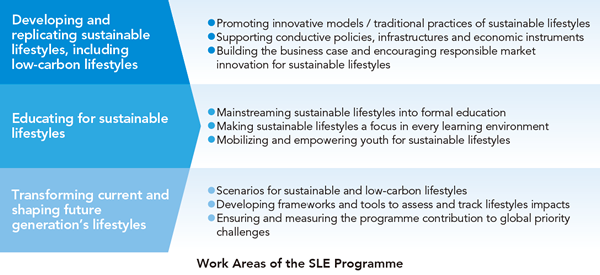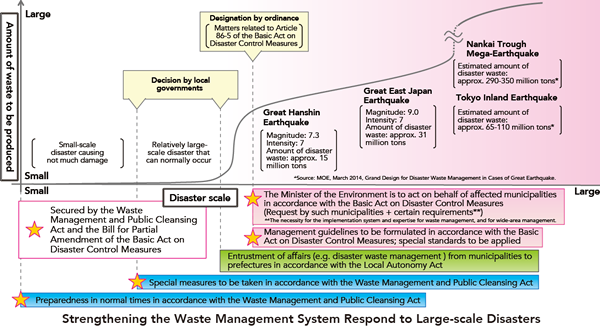Current topics
The First Meeting of the Multistakeholder Advisory Committee of the UN 10-Year Programme on Sustainable Lifestyles and Education
Tokyo Was Once Again the Centre of Planning for International Actions to Promote Well-being of Society and Its Citizens
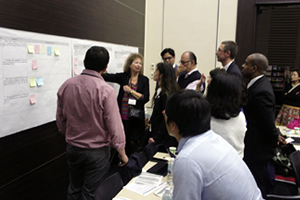
The lively discussion of experts highlighting the actions to be prioritised under the programme. (Tokyo, March 18-19, 2015)
Experts from over 21 countries descended in Tokyo for the first international meeting of the Multistakeholder Advisory Committee (MAC) of the UN 10-Year programme on Sustainable Lifestyles and Education (SLE), held on 18-19 March, 2015.
The SLE programme is part of a broader framework called the 10-Year Framework of Programmes for Sustainable Consumption and Production (10YFP) that was adopted at the Rio+20 meeting in order to support initiatives worldwide towards a transition to Sustainable Consumption and Production.
During the meeting, the experts highlighted actions to be prioritised under three main themes: developing innovative models and replicating successful examples of sustainable lifestyles; providing education to develop the capacities of citizens, policy makers and businesses to encourage sustainable lifestyles; and developing tools and research to support transformation of current lifestyles and also shape future lifestyles.
The experts developed initial plans for flagship projects that will be implemented by global consortia of leading organisations, covering the themes of urban lifestyles, workplace environments, schools and other learning environments, and also research for future lifestyles.
Besides the flagship projects, members also agreed to launch a call for project proposals to be funded from the 10YFP Trust Fund. The call is expected to be announced soon.
Japan's Ministry of Environment is co-leading the SLE programme, together with the Government of Sweden and WWF International. For this fiscal year, Japan has provided 2.5 million US dollars to support the SLE programme. This will focus on projects that demonstrate quantifiable reductions in CO2 emissions due to changes in lifestyles.
The Actions for Disaster Waste Management
The Third UN World Conference on Disaster Risk Reduction/Great East Japan Earthquake Forum
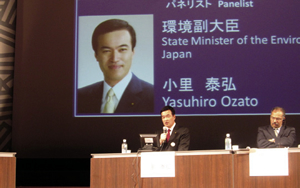
Presentation about Japanese disaster waste management by Mr. Ozato, the State Minister of the Environment

For the quick and smooth management of disaster waste, it is crucial to take advantage of the experience of Great Hanshin earthquake and Great East Japan earthquake for the management of the domestic and overseas disaster waste in the future.
We presented our disaster waste management at a symposium about the disaster waste that was related to the Third UN World Conference on Disaster Risk Reduction held from March 14 to 17, 2014 in Sendai, Miyagi prefecture. In this symposium, Mr. Ozato, the State Minister of the Environment, explained the lessons learned from Great East Japan earthquake and Great Hanshin earthquake, our method and technologies for the disaster waste management, and we exchanged views on the high priority of the disaster waste management with UN Environment Programme, World Maritime University, and the City of Sendai in the panel discussion.
In order to respond quickly and smoothly in cases of disaster, the Ministry of the Environment, Japan will comprehensively strengthen the waste management system by building a regular cooperating network among the national government, prefectures, municipalities, and enterprises, making the waste management facilities earthquake-resistant and installing the emergency generating facilities. Furthermore, we will amend the relevant laws to secure the practice of mentioned activities in order to make our measures cover all kinds of disasters from large-scale ones to small-scale ones.
More Information:
The Third UN World Conference on Disaster Risk Reduction (WCDRR) 2015 and the Official Side Event
"Mainstreaming Ecosystem-based Disaster Risk Reduction and Reconstruction"
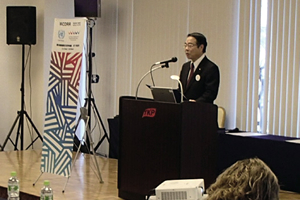
The opening remarks by Minister Mochizuki
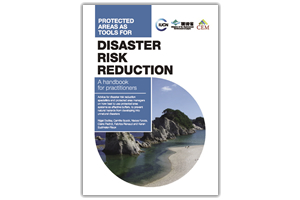
'A handbook for practitioners; Protected Areas as Tools for Disaster Risk Reduction'
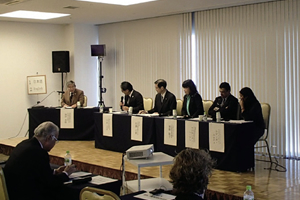
The panel discussion
The Ministry of the Environment, Japan (MOEJ), the United Nations University (UNU) and the International Union for Conservation of Nature (IUCN) co-hosted the Public Forum Side Event "Mainstreaming Ecosystem-based Disaster Risk Reduction and Reconstruction" on the first day of WCDRR held in Sendai City, Japan from March 14th to 18th. Over 200 participants from home and abroad attended the event.
Mr. Mochizuki, the Minister of the Environment of Japan, gave the opening speech and announced that MOEJ planned to provide 1 million dollars of financial support for IUCN through the Japan Biodiversity Fund established in the Secretariat of the Convention on Biological Diversity in order to support capacity building activities of government officials in charge of environment and disaster risk reduction in developing countries.
In the event, MOEJ and IUCN launched 'A handbook for practitioners; Protected Areas as Tools for Disaster Risk Reduction' in Japanese and English.
Following the remarks of Mrs. Akie Abe, the spouse of the Prime Minister of Japan, the keynote speeches were made by Prof. Kazuhiko Takeuchi, the Senior Vice Rector of UNU and Ms. Inger Andersen, the Director General of IUCN. Then Mr. Christopher Briggs, the executive secretary of the Ramsar Convention, and Mr. Shoichi Shirahata, the chairman of Kesennuma-Oshima Tourism Association, presented the best practices from all over the world.
In the later part of the event, the panel discussion was held under the coordination by Prof. Shiro Wakui, the acting chair of UNDB-J Committee. The panelists discussed their views on the ecosystem-based disaster risk reduction and reconstruction as well as the issues of diffusing the best practices such as the Kesennuma-Oshima models and their solutions.
As relevant sessions were also held in the plenary meeting of WCDRR, we found that the expectations for this field are very high. We will continuously promote the Ecosystem-based Disaster Risk Reduction and Reconstruction worldwide.




